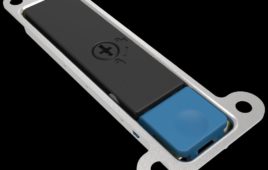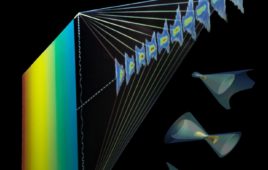The wireless industry has been abuzz of late as carriers across the globe push toward the 1 Gbps milestone using a combination of carrier aggregation, MIMO, and 256-QAM in the march toward 5G. But even more ambitious goals on that front – like Sprint’s plan to deliver 3-6 Gbps in the coming years – pale in comparison to the speeds achieved in recent tests at Brown University.
As highlighted in the journal Nature Communications, researchers at the Ivy League school said they were able to deliver real-time video signals at a rate of 50 Gbps. That speed, they noted, is around 100 times faster than today’s fastest cellular networks.
So how did they do it?
Rather than dabbling in the millimeter wave bands favored by wireless carriers for their 5G work, the Brown researchers jumped straight into terahertz territory. The tests were conducted at 264.7 GHz and 322.5 GHz, and used a system for multiplexing and demultiplexing first tested as a proof of concept by Brown School of Engineering Professor Daniel Mittleman in 2015. Mittleman indicated the most recent experiments expanded on his initial work by testing the system using real data from high-definition television broadcasts.
“We showed that we can transmit separate data streams on terahertz waves at very high speeds and with very low error rates,” Mittleman commented. “This is the first time anybody has characterized a terahertz multiplexing system using actual data, and our results show that our approach could be viable in future terahertz wireless networks.”
The team reported transmissions were free of errors up to 10 Gbps, but noted error rates increased when the speed was boosted to 50 Gbps using two aggregated channels. That margin of error, however, is well within the realm of what can be fixed using forward error correction, researchers said.
The multiplexing approach used by Mittleman and his colleagues employs two parallel metal plates to form a waveguide. One of those plates has a slit cut in it that allows radiation from the terahertz waves to exit the guide. The angle at which radiation beams escape is dependent upon the frequency of the wave, the team explained.
Unlike today’s wireless systems that generally use omnidirectional broadcasts, terahertz waves will propagate as directional beams as in beamforming. Thus, the researchers indicated the directional relationship between propagation angle and frequency will be key in enabling terahertz multiplexing. That is, a user at a particular location will communicate on a particular frequency.
“We can put several waves at several different frequencies — each of them carrying a data stream — into the waveguide, and they won’t interfere with each other because they’re different frequencies; that’s multiplexing,” Mittleman said. “Each of those frequencies leaks out of the slit at a different angle, separating the data streams; that’s demultiplexing.”
One interesting finding highlighted by Mittleman was the discovery that terahertz waves modulated to encode data yield sideband frequencies alongside the main wave that must also be picked up by a receiver in order to transmit all the data. Researchers found the angle of the detector with respect to the sidebands is important to keeping the error rate down.
“It’s something we didn’t expect, and it shows how important it is to characterize these systems using data rather than just an unmodulated radiation source,” Mittleman said.
Despite the progress, Mittleman acknowledged actual deployments of terahertz technology are likely a good way off. The Federal Communications Commission is putting a good deal of effort into freeing up spectrum for mobile broadband, but appears to be focused on sub-24 GHz bands for the time being. And as Mittleman put it, “companies are going to be reluctant to develop terahertz technologies until there’s a serious effort by regulators to allocate frequency bands for specific uses.”
But wireless companies will also have to contend with the propagation obstacles inherent in terahertz bands just as they are battling with the same in the 28 GHz, 37 GHz, and 39 GHz frequencies.
Still, the researchers plan to continue developing this and other terahertz components. Mittleman recently received a license from the FCC to perform outdoor tests at terahertz frequencies on the Brown University campus.
Filed Under: Telecommunications (spectrums)




